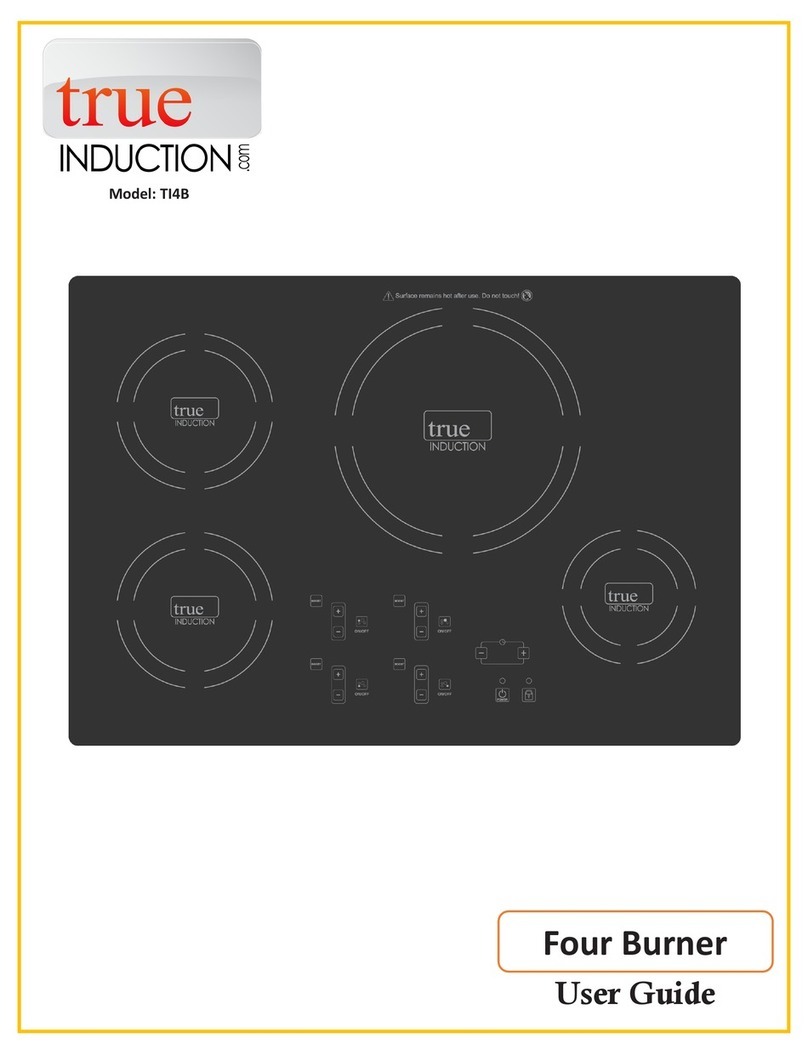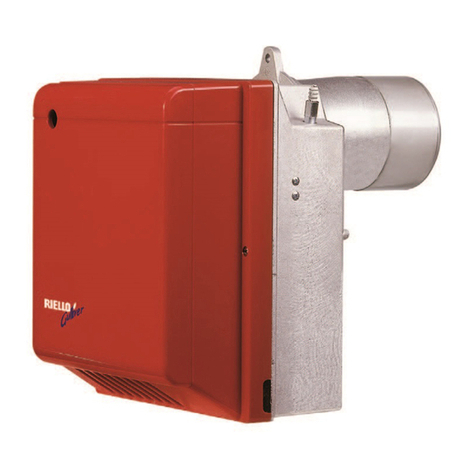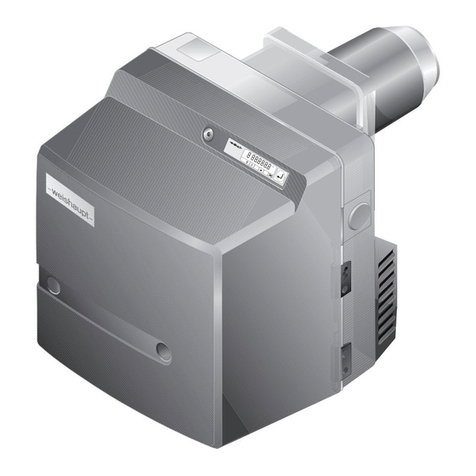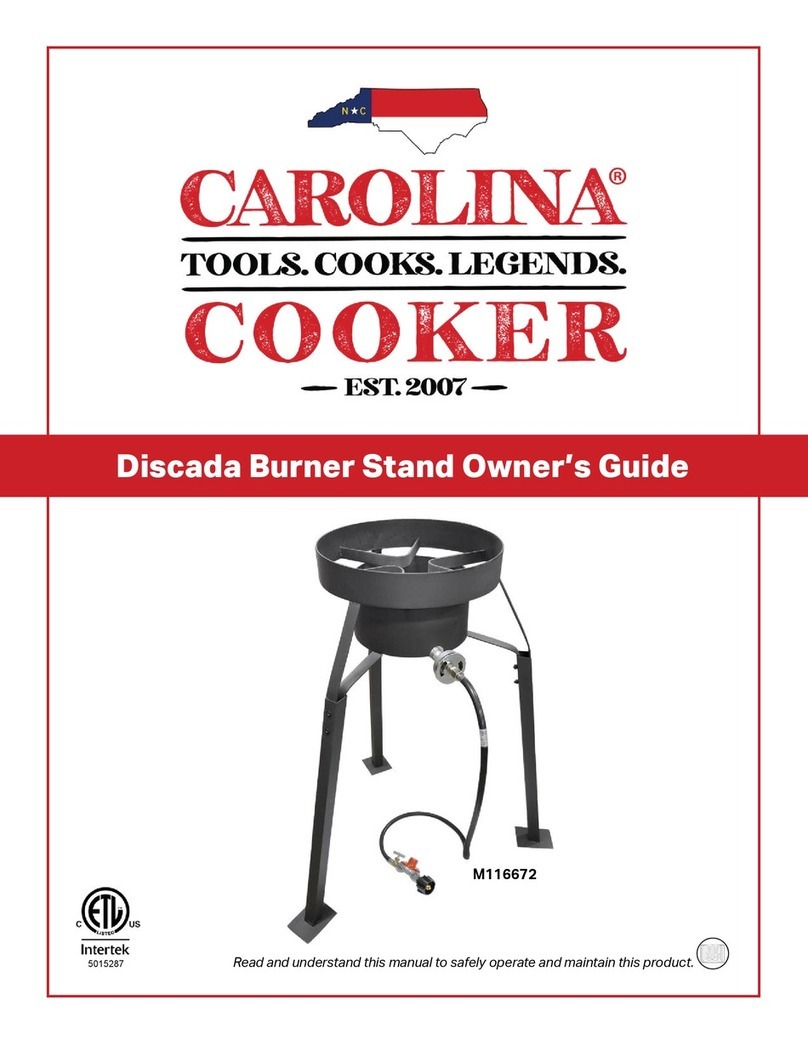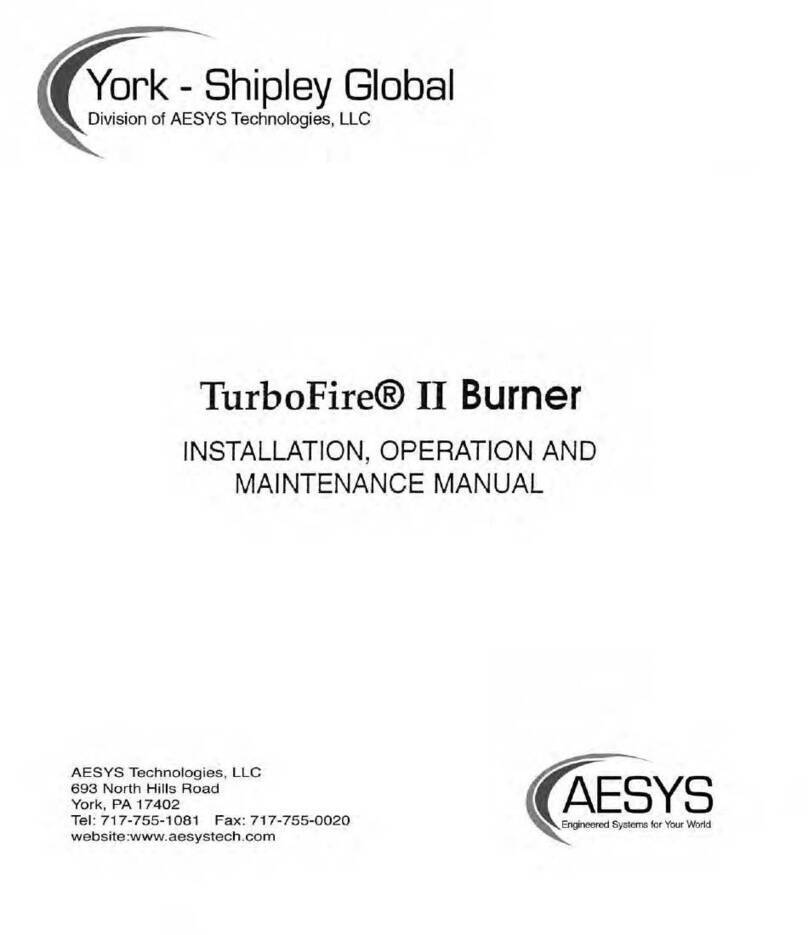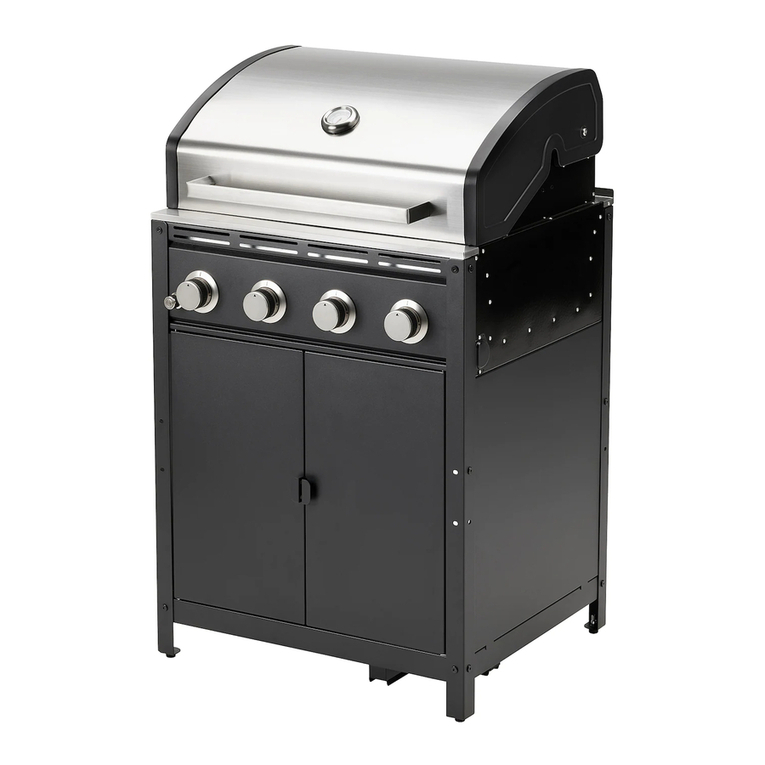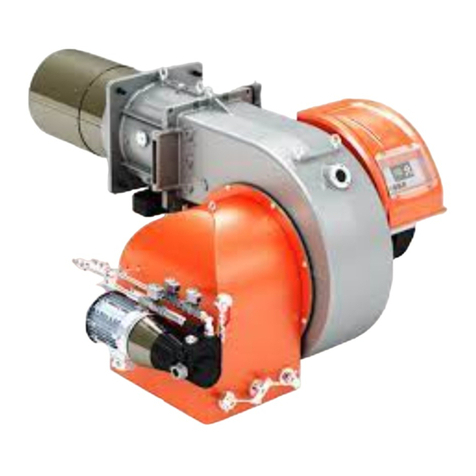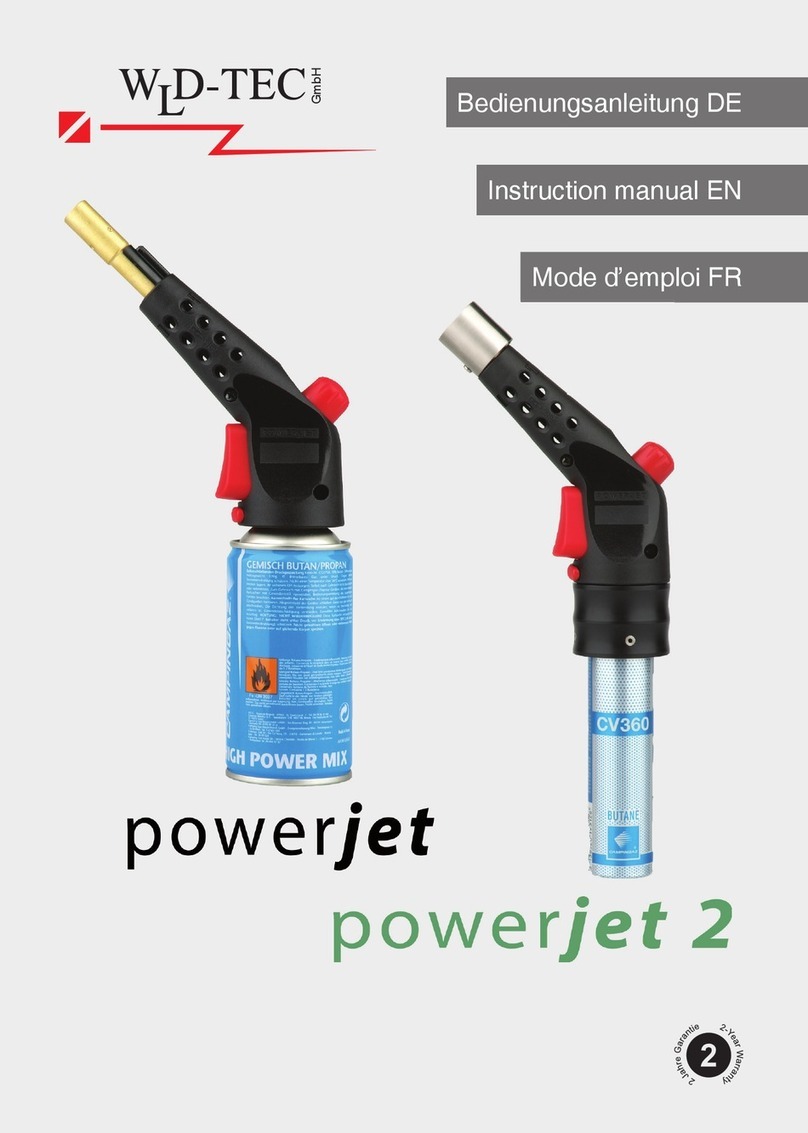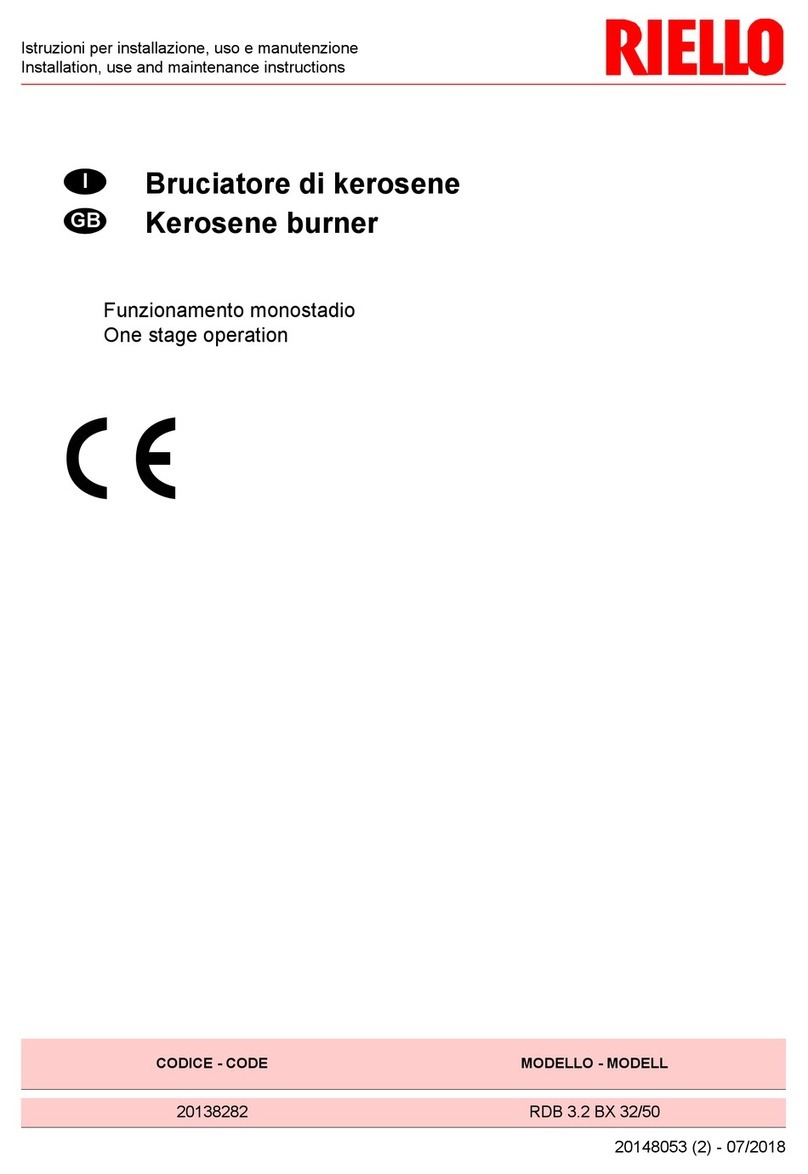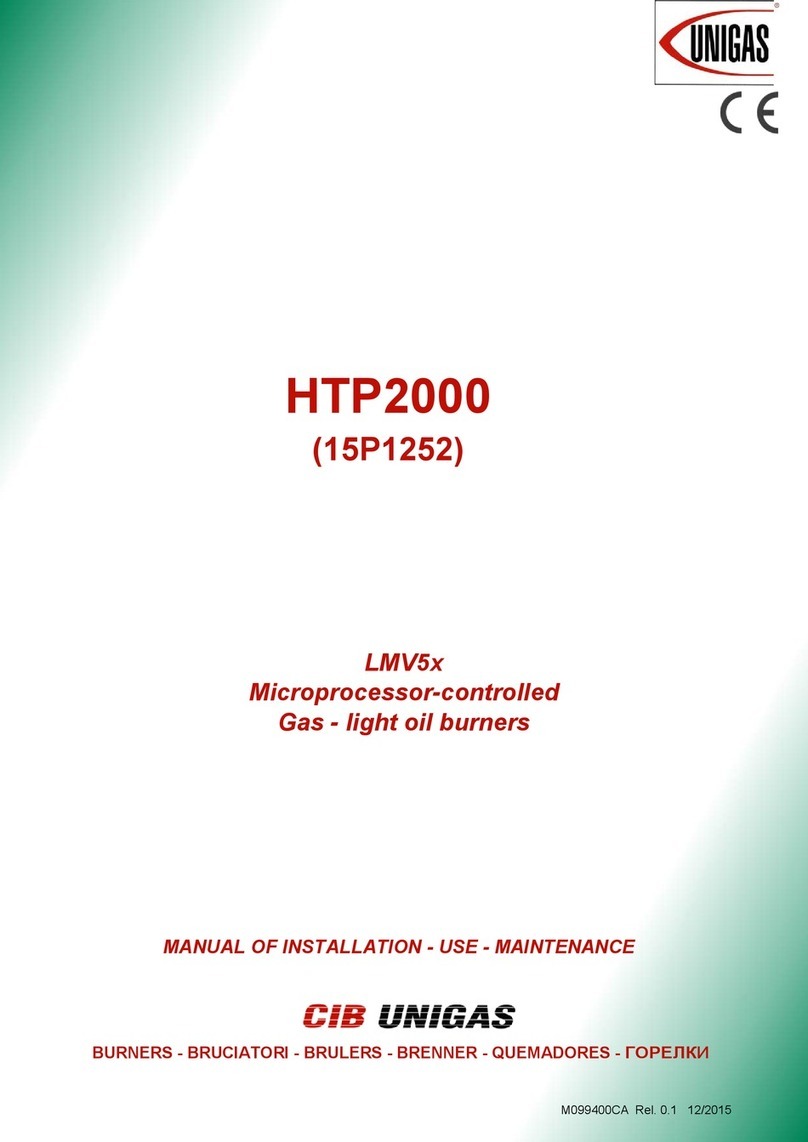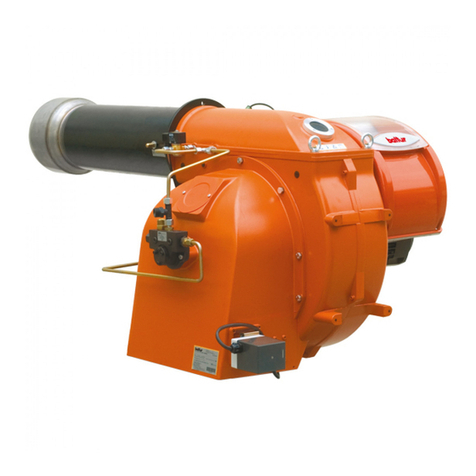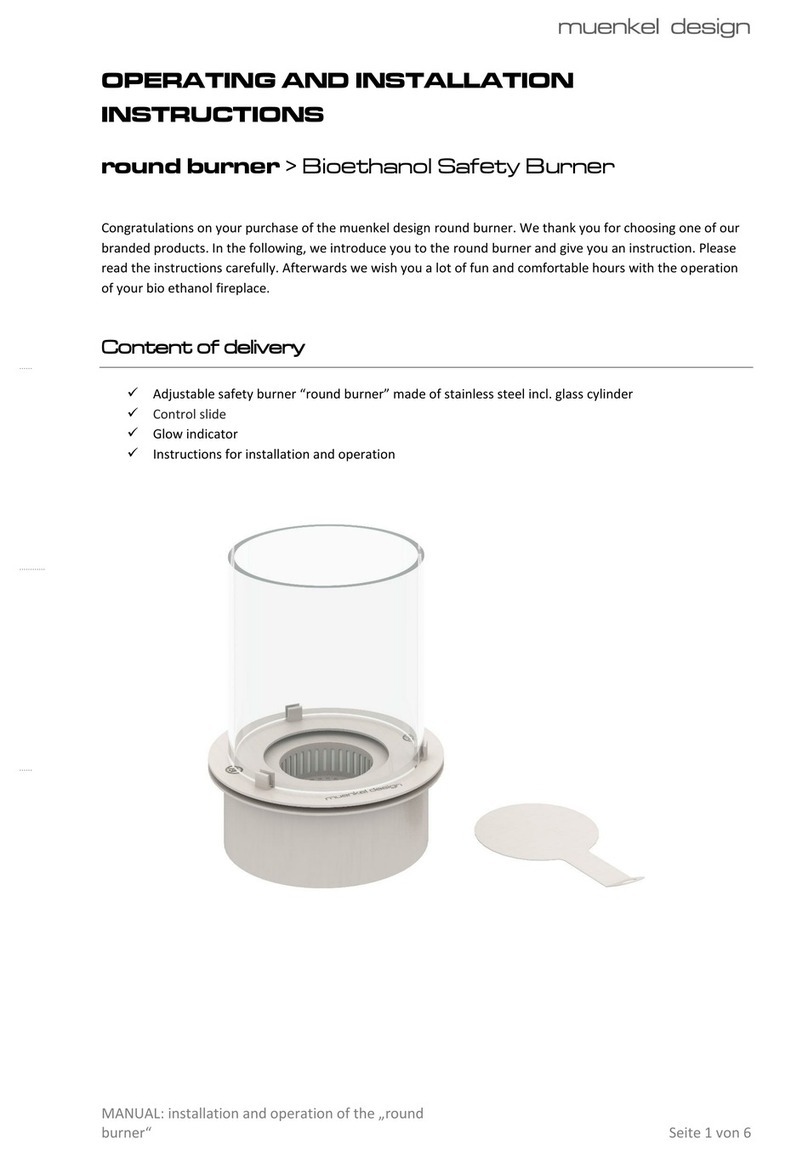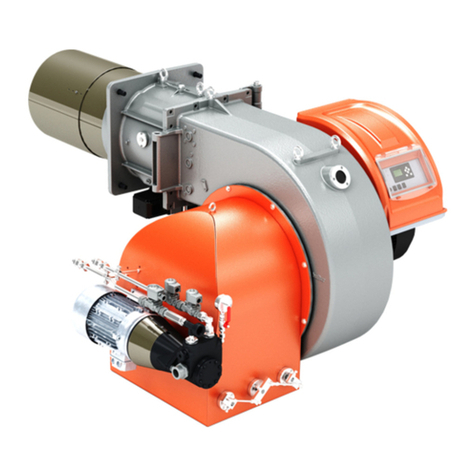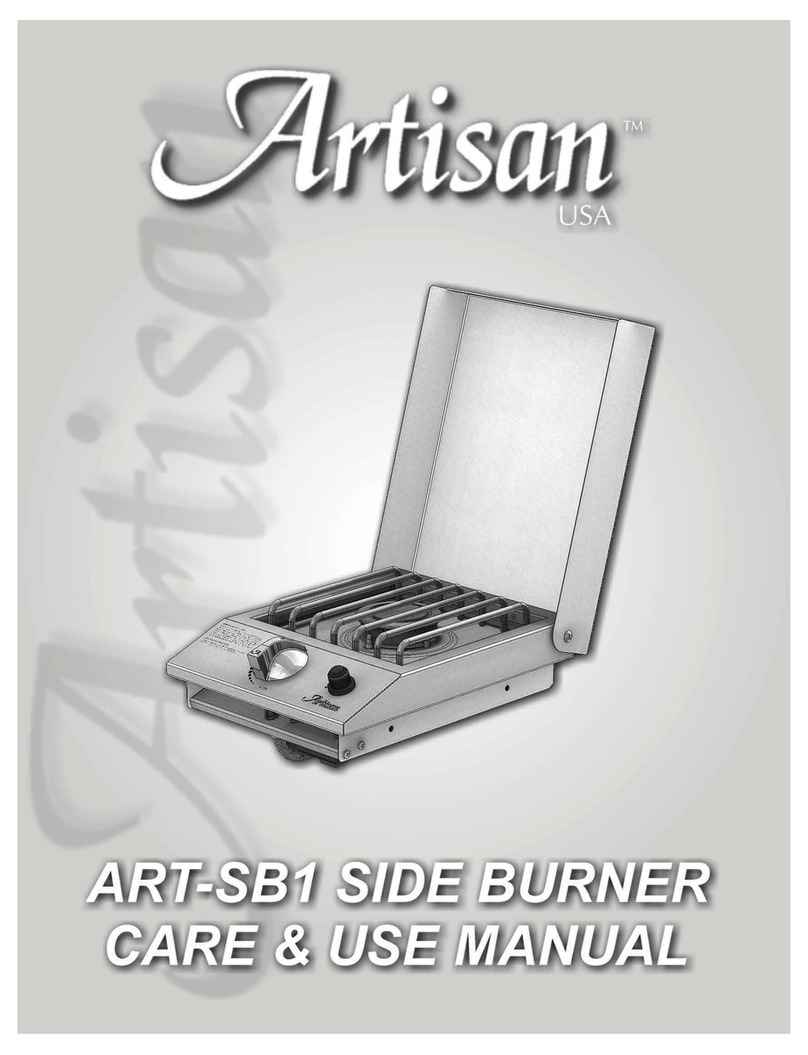
SETTING THE CONTROLS
The controls work in 100 step modulation and change these step automatically.
If you use the automatic calculation program after measuring the performance of the auger,
no further setting should be necessary.
Setting pellets at low and full load…
During normal everyday use it is recommended to occasionally check the combustion and assess the flames.
Whenever the heating pellets are changed (size or length of pellets, etc. …),
the dosing rate of the auger will also change, which will affect combustion.
(However, if the burner is equipped with oxygen regulation, the burner will regulate this automatically.)
If there is a big flame on low load (10-30% performance)
(Dark, or black tips) or the ash is black.
In this case fewer pellets are required at low load.
(Reduce the chimney draught or reduce the pellets low )
If there is a big flame on full load (70-100% performance)
(Dark, or black tips) or the ash is black.
In this case fewer pellets are required at full load.
(Increase the performance of the auger or reduce the pellets high.)
If there is a weak flame on low load (10-30% performance)
(Small flame and sputtering stars) or the ash is light grey.
In this case more pellets are required.
(Increase the chimney draught or set the pellets low higher).
If there is a weak flame on full load (70-100%)
(Small flame and sputtering stars) or the ash is light grey, with dark pellets.
In this case more pellets are required.
(Reduce the performance of the auger or set the pellets high higher.)
The pellet burner must not smoke, but must be sealed tight.
(Take care that smoke does not mingle with condensed steam.)
Correct combustion normally results in dark grey ash,
although this can vary slightly depending on the type of pellets used.
White and light ash in the boiler means excess air.
Having the boiler set up correctly has a great effect on the economy of burning wooden pellets
Fuel type
The boiler is set up for wooden pellets Ø 5-8mm,
which do not burn to cinders!! ( Hard ashes )
Manual
NBE pellet system
EXTENDED SET-UP GUIDE


